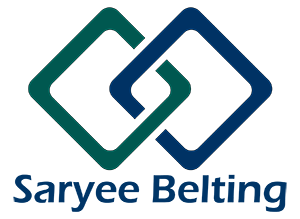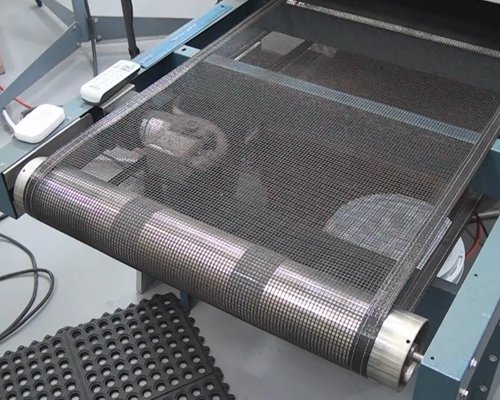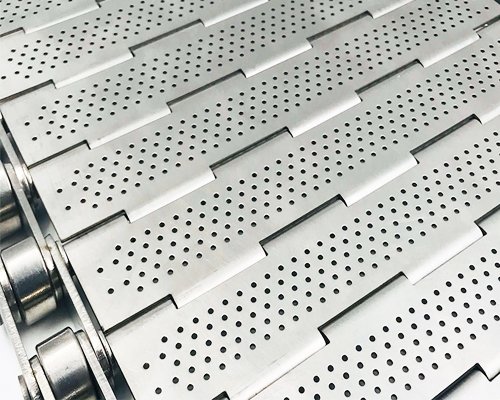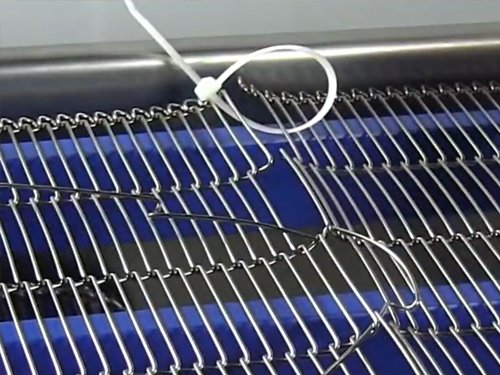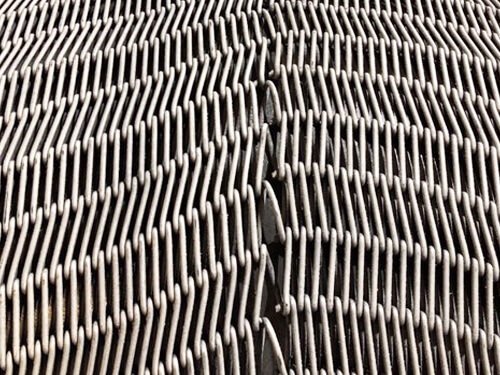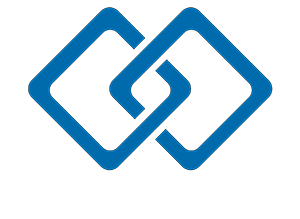When it comes to metal conveyor belts, surface treatments are crucial for enhancing their durability, cleanliness, and performance. Two common surface treatments for metal conveyor belts are pickling and electropolishing. Each process has distinct advantages and applications depending on the desired outcome for the metal belt.
Pickling
Pickling is a chemical treatment used to remove impurities such as stains, rust, scale, and inorganic contaminants from metal surfaces. The process involves immersing the metal conveyor belt in an acid solution, typically containing hydrochloric or sulfuric acid, which reacts with the oxides on the metal surface.


Advantages of Pickling:
- Effective Removal of Oxides and Scales: Pickling is particularly effective at removing oxide layers and mill scales that form during manufacturing processes such as welding, heat treating, or rolling.
- Improved Surface Cleanliness: By removing unwanted surface impurities, pickling results in a clean metal surface that can enhance the performance of conveyor belts in various industrial environments.
- Prepares Surface for Further Treatments: Pickled surfaces are often prepared for subsequent surface treatments, such as coating or plating, as the process leaves the metal clean and free of surface contaminants.
Disadvantages of Pickling:
- Surface Roughness: The process can increase the surface roughness of the metal, which may not be desirable for applications requiring a smooth finish.
- Environmental and Safety Concerns: The acids used in pickling are hazardous and require careful handling, disposal, and neutralization, which can have environmental and safety implications.
- Material Removal: It is a more aggressive process that can remove some material from the metal surface, which may reduce the thickness of thin belts.
Electropolishing
Electropolishing is an electrochemical process that smooths and polishes the metal surface. It involves immersing the metal conveyor belt in an electrolytic solution and applying an electric current, which removes a thin layer of material from the surface. This process preferentially dissolves the high points on the metal surface, leading to a smoother, more reflective finish.
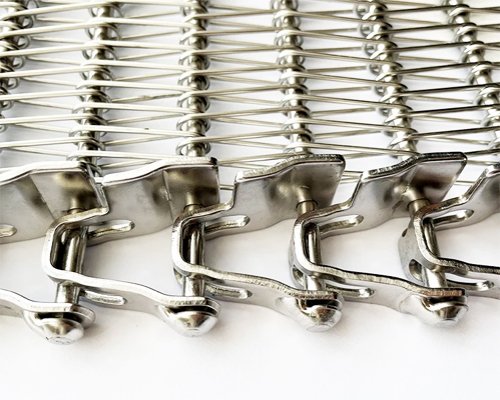

Advantages of Electropolishing:
- Improved Corrosion Resistance: Electropolishing removes surface imperfections and contaminants that can lead to corrosion, significantly enhancing the metal’s resistance to corrosive environments.
- Smoother, Brighter Surface: The process results in a smoother, mirror-like finish that not only improves the appearance but also reduces friction, which is beneficial for conveyor belts that handle delicate or sticky materials.
- Deburring: Electropolishing effectively removes burrs and sharp edges, which can help prevent product damage and reduce wear on the conveyor system.
- Reduced Microbial Adhesion: A smoother surface means fewer microscopic crevices for bacteria and other contaminants to adhere to, making electropolished belts ideal for hygienic environments, such as food and pharmaceutical industries.
Disadvantages of Electropolishing:
- Cost: Electropolishing is generally more expensive than pickling due to the equipment, electrical energy, and precision required.
- Material Removal Control: While the process is precise, it removes a thin layer of metal, which might not be suitable for very thin belts or components where maintaining original dimensions is critical.
- Process Complexity: Electropolishing requires precise control of various parameters, such as current density and temperature, which can make the process more complex and time-consuming compared to pickling.
Comparison and Applications
- Surface Finish: Electropolishing provides a superior surface finish compared to pickling, resulting in a smoother and more aesthetically pleasing surface.
- Corrosion Resistance: Electropolishing enhances corrosion resistance more effectively than pickling due to the removal of surface defects and a uniform finish.
- Cost and Environmental Impact: Pickling is less expensive and simpler to perform but involves handling hazardous chemicals, whereas electropolishing requires more specialized equipment and higher operational costs.
- Applications: Pickling is commonly used in industries where surface cleanliness and preparation for further treatments are necessary, such as in heavy-duty industrial applications. Electropolishing is preferred in industries where hygiene, corrosion resistance, and a smooth surface are paramount, such as food processing, pharmaceuticals, and electronics.
The choice between pickling and electropolishing for metal conveyor belts depends on the specific application requirements, including desired surface finish, corrosion resistance, cost considerations, and environmental and safety factors. Understanding the advantages and disadvantages of each process helps in making an informed decision to optimize the performance and longevity of metal conveyor belts.
